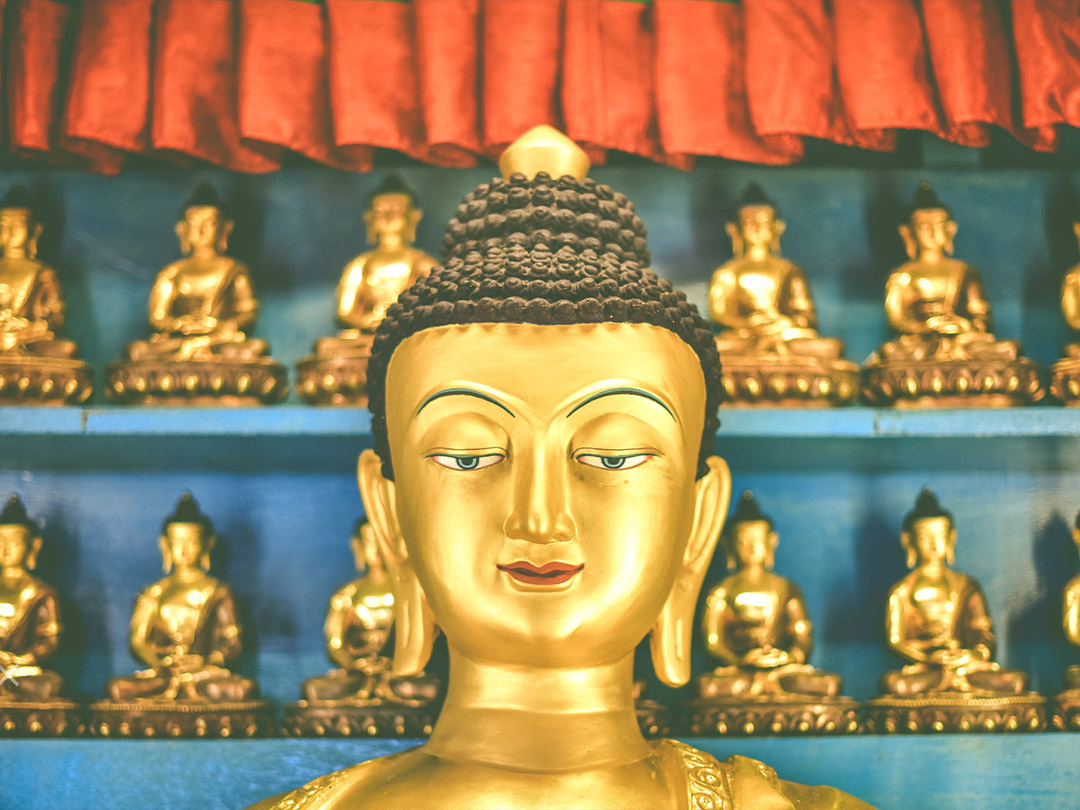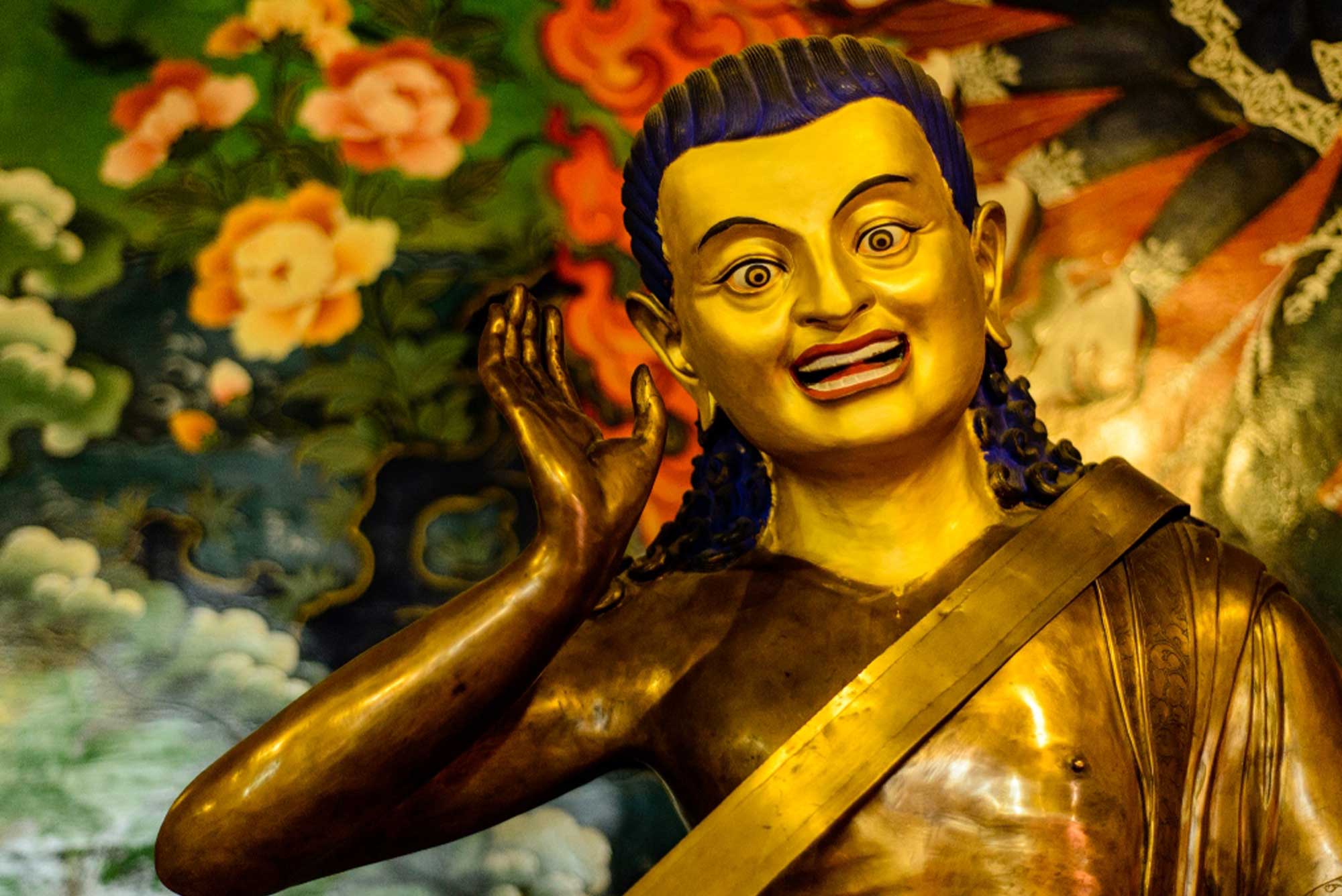Who Was the Buddha? In the annals of history, few individuals have had a more profound impact on the spiritual landscape of the world than Siddhartha Gautama, commonly known as the Buddha. His life and teachings have not only shaped the course of Buddhism but have also left an indelible mark on the collective consciousness of humanity. In this article, we will embark on a journey to unravel the life, teachings, and enduring legacy of the Buddha.

The Birth of a Prince
Siddhartha Gautama’s story begins in Lumbini, Nepal, around 567 BCE. He was born into the lap of luxury as the son of a king. It was a life of opulence and privilege that most could only dream of. Siddhartha married and became a father, seemingly destined to follow in his father’s footsteps as a ruler.
The Awakening
The turning point in Siddhartha’s life came when he ventured beyond the palace walls and witnessed the realities of human suffering. He encountered a sick person, an old man, and a corpse. These stark encounters shook him to his core, forcing him to confront the impermanence and suffering that are inherent in human existence. It was during this time that the urge to seek peace of mind arose within him.
The Spiritual Quest
Siddhartha embarked on a spiritual quest, renouncing his worldly life and seeking enlightenment. He subjected himself to extreme ascetic practices, believing that the path to wisdom lay on the brink of death. However, after six years of these rigorous practices, he found only frustration and physical suffering.
Enlightenment Under the Bodhi Tree
It was at Bodh Gaya, beneath the famous Bodhi tree, that Siddhartha Gautama had his moment of enlightenment. He realized that the path to peace and wisdom lay not in extreme asceticism but in mental discipline and self-realization. It was at this point that he transcended his human existence and became the Buddha, which means “the awakened one.”
The Teachings of the Buddha
The Buddha spent the remainder of his life sharing the profound insights he had gained. He gave his first sermon in Sarnath, near Benares, setting in motion the dissemination of his teachings. He roamed from village to village, attracting disciples and establishing the original order of Buddhist nuns and monks. His teachings centered around the core concepts of suffering, its causes, the possibility of liberation, and the path to enlightenment.
The Historical Buddha
While the traditional story of the Buddha’s life may not be entirely factual, historians generally agree that a historical figure named Siddhartha Gautama did exist. His teachings, recorded in the oldest scriptures, continue to inspire millions worldwide. The exact dates and details may be debated, but the impact of the Buddha’s teachings remains undeniable.
Other Buddhas and the Concept of Enlightenment
In Theravada Buddhism, it is believed that there is only one Buddha per age of humankind, and the historical Siddhartha Gautama is the Buddha of the current age. Others who realize enlightenment within this age are called arhats or arahants. However, Mahayana and Vajrayana Buddhism allow for the existence of multiple buddhas. The ideal in these traditions is to be a bodhisattva, one who vows to remain in the world until all beings are enlightened.
Buddhas in Buddhist Art
Buddhist art is replete with representations of buddhas, each symbolizing different aspects of enlightenment and human nature. Iconic buddhas like Amitabha, Bhaiṣajyaguru, and Vairocana convey deep meanings through their poses and characteristics. It’s essential to understand that the commonly recognized laughing Buddha, often associated with happiness and abundance, is a character from Chinese folklore, distinct from the historical Buddha.
Worship in Buddhism
Buddhism does not involve worshiping the Buddha as a god. In fact, the Buddha discouraged excessive worship. Instead, practices like bowing to Buddha statues are symbolic expressions of letting go of selfishness and ego, committing to the Buddha’s teachings, and striving for self-improvement.
The Buddha’s Teachings
The core of Buddhist teachings is encapsulated in the Four Noble Truths. These truths delve into the nature of suffering, its causes, the possibility of liberation, and the path to enlightenment. Buddhism emphasizes personal insight and realization over blind belief, encouraging individuals to explore and understand their own suffering and the cessation of craving.
Enlightenment: Perceiving the True Nature
Enlightenment, often misunderstood as a state of eternal bliss, is about perceiving the true nature of reality and oneself. It’s the recognition of buddhanature, the fundamental essence within all beings. Realizing enlightenment is not gaining a new quality but uncovering what has always been present, obscured by the fog of delusion.
Is There a Buddhist Bible?
Buddhism doesn’t have a single universally accepted scripture like some religions. Various schools and denominations have their own canons of scriptures. Moreover, Buddhist texts are not considered divine revelations but guides for practice and understanding. Buddhism encourages personal investigation and discernment.
Conclusion
Siddhartha Gautama, the Buddha, was not a god but an ordinary person who transcended the human condition to attain enlightenment. His teachings continue to resonate with millions, guiding them on a path of self-discovery and liberation from suffering. The Buddha’s legacy lives on in the hearts and minds of those who seek the profound wisdom he shared.
FAQs (Frequently Asked Questions)
What does the term “Buddha” mean?
The term “Buddha” means “one who is awake” and refers to someone who has realized the true nature of reality.
Are there other Buddhas in Buddhism?
In Theravada Buddhism, there is typically one Buddha per age, with the historical Siddhartha Gautama being the current Buddha. Mahayana and Vajrayana Buddhism allow for the existence of multiple buddhas.
What is the significance of bowing to Buddha statues?
Bowing to Buddha statues is a symbolic gesture in Buddhism, representing the commitment to the Buddha’s teachings and the abandonment of ego-centered desires.
What are the Four Noble Truths in Buddhism?
The Four Noble Truths are the foundational teachings of Buddhism, addressing the nature of suffering, its causes, the possibility of liberation, and the path to enlightenment.
What is the ultimate goal of Buddhism?
The ultimate goal of Buddhism is the realization of enlightenment, which involves perceiving the true nature of reality and oneself, transcending suffering, and attaining inner peace and wisdom.










